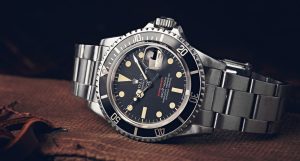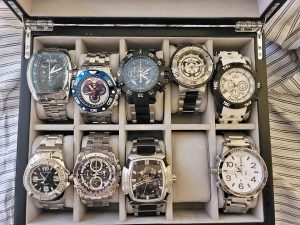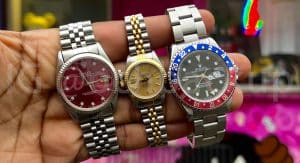
Feature: How The Rolex Day-Date Became The ULTIMATE Status Symbol
Any Rolex watch, from the relatively no-frills Datejust to the sporty Daytona, is a status symbol. But there’s one model in the brand’s catalogue that stands apart as a true signifier of wealth, power and prestige. A watch that radiates chest-beating alpha confidence and Big Cheese swagger without resorting to the beefed-up cases of an AP Royal Oak Offshore or the elaborate over-engineering of a Richard Mille.
That watch is, of course, the Day-Date—a.k.a. the ‘President’.
Launched in 1956 with the reference 6511, it was the first watch in which the day of the week was spelt out completely in a window on the dial, while featuring a date window at 3 o’clock, just like the Datejust released eleven years earlier.

A Day-Date reference 18026 in platinum from 1981. Image courtesy of Bonhams
Rolex was clearly targeting a more affluent wearer with the Day-Date, offering the watch only in platinum and gold, never steel—which remains the case today—and pairing it with its newest three-link bracelet that oozed finesse thanks to an ingeniously concealed clasp.
Still, it’s far from the most expensive watch money can buy. Nor is it the biggest, blingiest, most famous or complicated.
So how did the Day-Date become the ultimate status symbol of business CEOs, hip-hop moguls, heads of state and other high-flyers?
A Decade Of Innovation
The 1950s pretty much defined Rolex as we know it. It was the decade that saw the birth of its most iconic models, with the Explorer, Submariner, GMT Master and Milgauss launched in a frenzy of innovation between 1953 and 1955.
At this point, Rolex could have simply gone on producing mostly sports models in steel, but widening its range encouraged growth and provided more protection against fluctuating tastes.
To ensure Rolex appealed as much to the affluent customer as to professionals who wore it for utilitarian purposes, it came up with what was essentially a more elaborate Datejust—albeit in precious metal and with the cyclops lens over the date.
Rolex, then still under the auspices of its marketing genius co-founder, Hans Wilsdorf, had thus far been canny in selecting brand ambassadors for its tool watches. It used the likes of swimmer Mercedes Gleitze to endorse their ground-breaking Oyster model and the success of the Everest Expedition to promote the Explorer.
However it needed an entirely different type of person to promote this dressier, prestigious piece. Someone with gravitas, power and influence, who people would look up to.
The Day-Date That Was Almost Binned
Rolex had gifted a Datejust to the US President Dwight D. Eisenhower after the end of World War II when he was a high-ranking general in the US Army. He wore it throughout his presidency, which did wonders for Rolex’s reputation in the US. But there’s no record of him owning or wearing a Day-Date, as is sometimes reported.
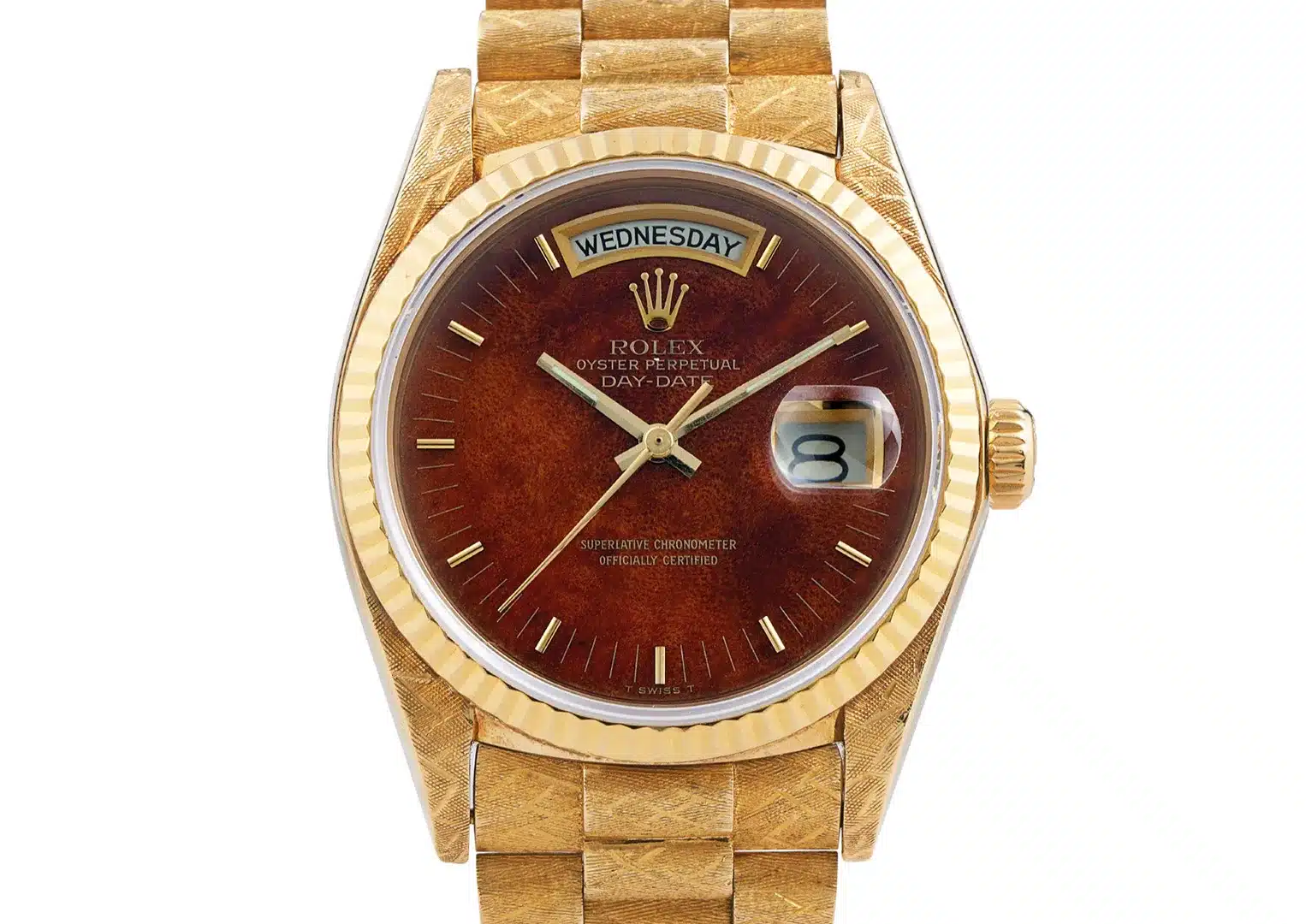
A Day-Date reference 18026 in platinum from 1981. Image courtesy of Bonhams
Rolex was clearly targeting a more affluent wearer with the Day-Date, offering the watch only in platinum and gold, never steel—which remains the case today—and pairing it with its newest three-link bracelet that oozed finesse thanks to an ingeniously concealed clasp.
Still, it’s far from the most expensive watch money can buy. Nor is it the biggest, blingiest, most famous or complicated.
So how did the Day-Date become the ultimate status symbol of business CEOs, hip-hop moguls, heads of state and other high-flyers?
A Decade Of Innovation
The 1950s pretty much defined Rolex as we know it. It was the decade that saw the birth of its most iconic models, with the Explorer, Submariner, GMT Master and Milgauss launched in a frenzy of innovation between 1953 and 1955.
At this point, Rolex could have simply gone on producing mostly sports models in steel, but widening its range encouraged growth and provided more protection against fluctuating tastes.
To ensure Rolex appealed as much to the affluent customer as to professionals who wore it for utilitarian purposes, it came up with what was essentially a more elaborate Datejust—albeit in precious metal and with the cyclops lens over the date.
Rolex, then still under the auspices of its marketing genius co-founder, Hans Wilsdorf, had thus far been canny in selecting brand ambassadors for its tool watches. It used the likes of swimmer Mercedes Gleitze to endorse their ground-breaking Oyster model and the success of the Everest Expedition to promote the Explorer.
However it needed an entirely different type of person to promote this dressier, prestigious piece. Someone with gravitas, power and influence, who people would look up to.
The Day-Date That Was Almost Binned
Rolex had gifted a Datejust to the US President Dwight D. Eisenhower after the end of World War II when he was a high-ranking general in the US Army. He wore it throughout his presidency, which did wonders for Rolex’s reputation in the US. But there’s no record of him owning or wearing a Day-Date, as is sometimes reported.
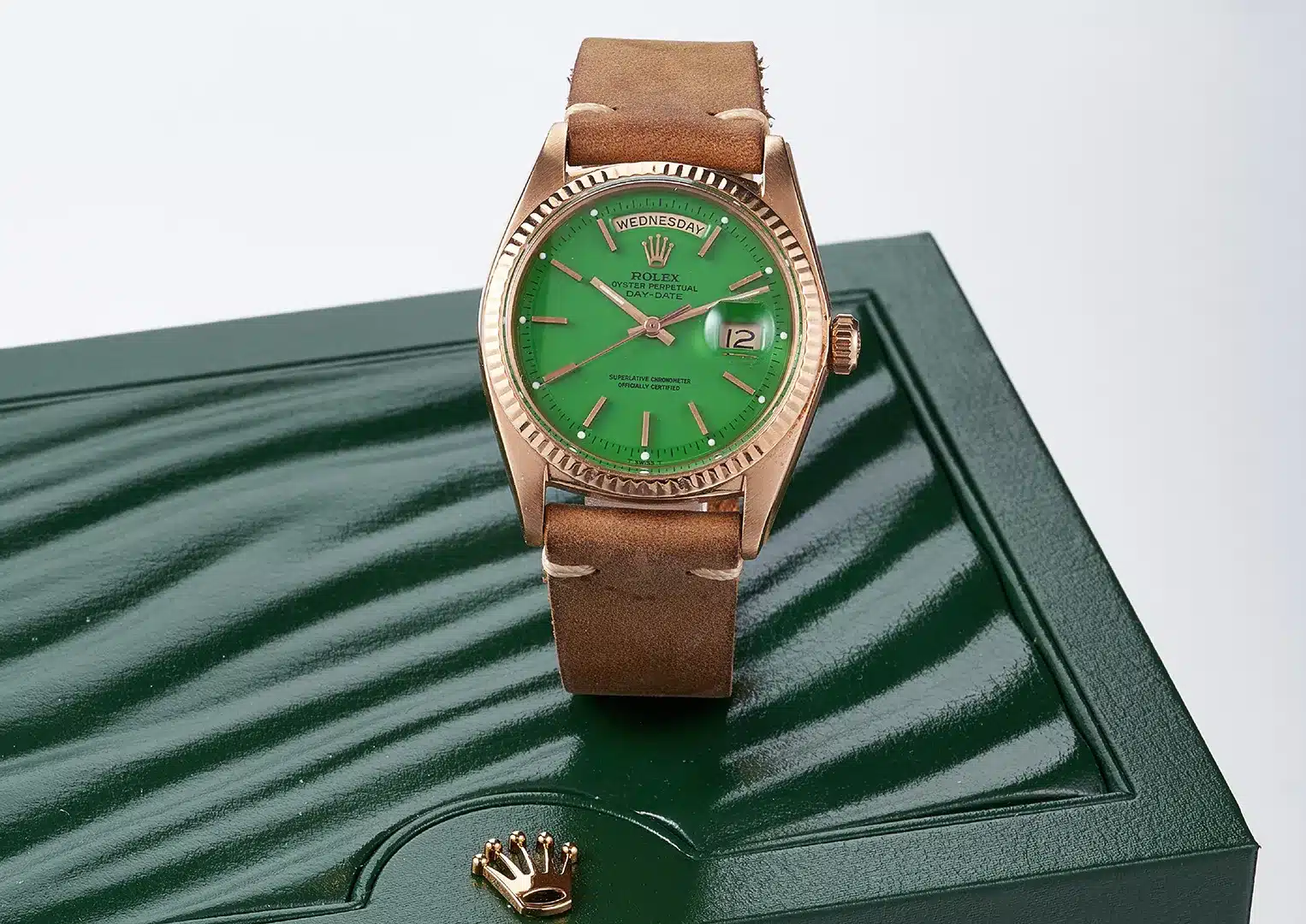
An early 1970s model in pink gold with leaf-green lacquered ‘stella’ dial. Image courtesy of Bonhams
Interestingly, it references ‘the presidents’ watch’, rather than the ‘president’s watch’—the apostrophe suggesting that the watch was worn by several presidents, not just Johnson.
Who were these other ‘presidents’? Or was Rolex already confident that the Day-Date would go on to be worn by other commanders-in-chief?
Either way, it is after this advert that the Day-Date began to be unofficially known as the President, although Rolex itself uses the word solely to describe the style of bracelet, not the watch.
Several presidents since Johnson have worn a Day-Date in office, including Nixon and Trump, with Gerald Ford reportedly turning down one offered to him by Rolex while he was in office—only to change his mind and request one after he lost the 1976 election to Jimmy Carter. Sadly, Rolex didn’t oblige so he had to splash out on his own.
Famous Day-Date Wearers
The Day-Date has become cinema or TV shorthand for ‘wealthy alpha male’, worn by everyone from mafia mob boss Tony Soprano to Michael Caine’s millionaire playboy swindler in the comedy classic, Dirty Rotten Scoundrels.
In real-life it’s been spotted on the wrists of billionaire philanthropist Warren Buffet, the Dalai Lama, basketball legend Michael Jordan, director Martin Scorsese and rapper Jay Z. Female watch-lovers have also embraced the Day-Date, with Jennifers Anniston and Lopez, and Rihanna, all fans.
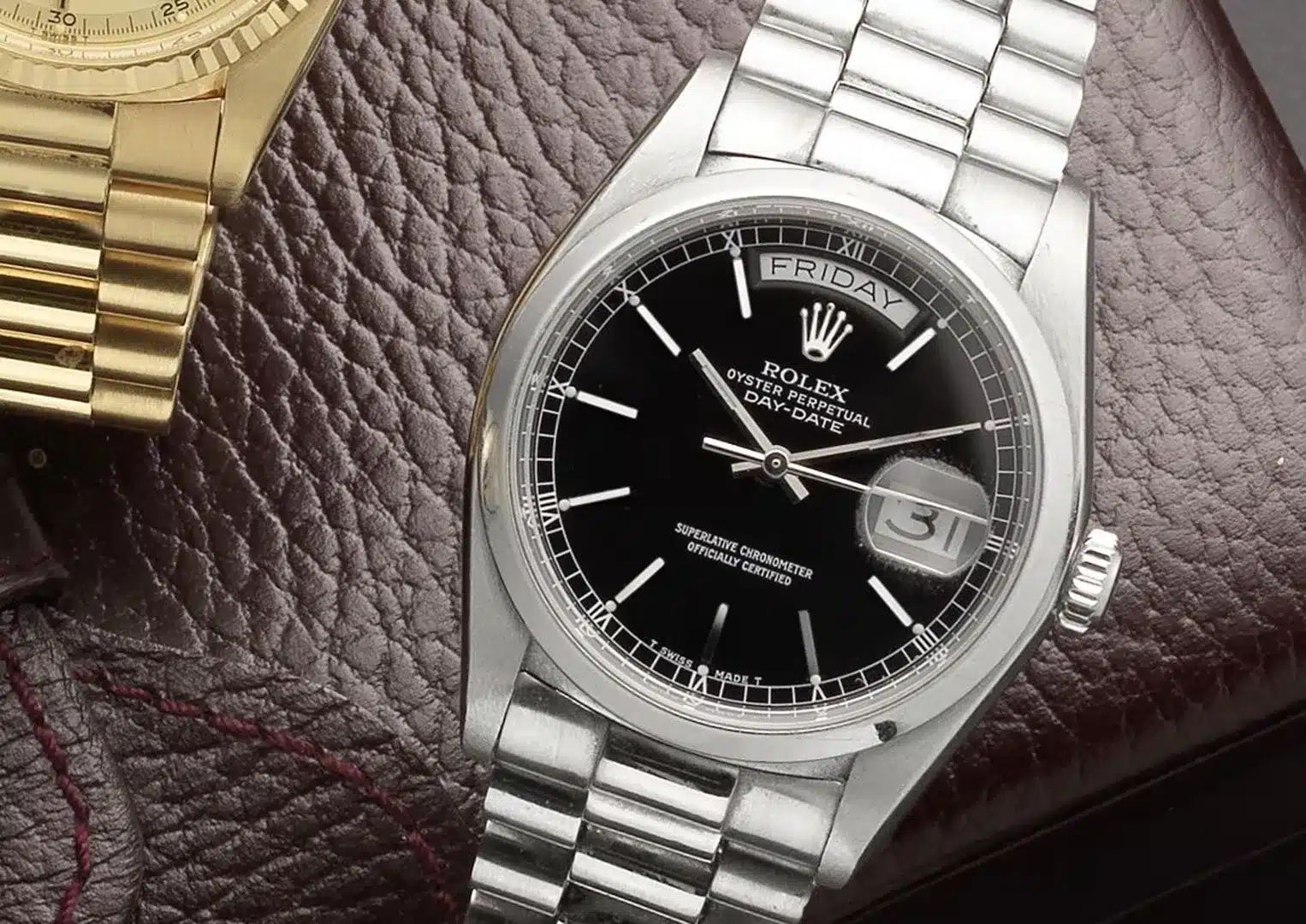
his Day-Date 40 reference 228239 in white gold is part of the current collection
Consistency has been key to the Day-Date’s longevity. Place the original reference 6511 alongside the contemporary reference 128238—both 36mm—and it’s clear that Rolex hasn’t spent the last 60-odd years meddling with the design.
The Day-Date II offered a larger option at 41mm but this was discontinued in 2015 after a six-year production run, leaving just the 36mm version and the Day-Date 40 in the current catalogue—although all three versions are widely available on the pre-owned Rolex market.
From gold to platinum, onyx dial to meteorite, the Day-Date is as understated or flamboyant as you want it to be.
That said, we may have to wait some time before the US President chooses to out-flex other world leaders with a version in rose gold and a diamond-encrusted bezel.
- WhatsApp:

- Email: support@ochrone.life

